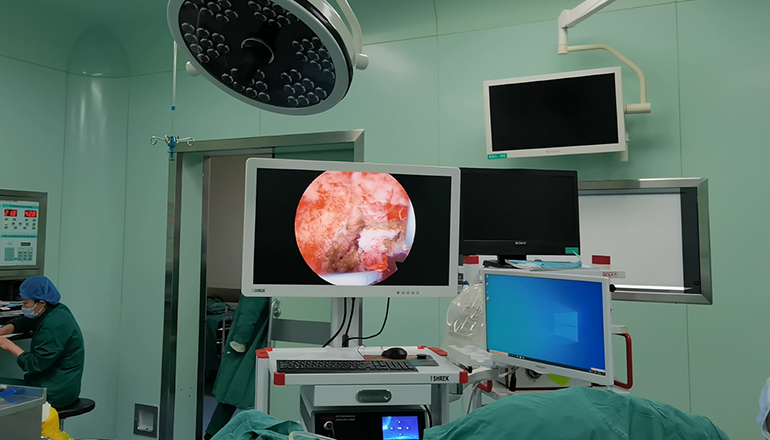- Shanghai, China
- [email protected]
- +86-21-58189111
Hysteroscopic adhesectomy is a medical procedure that is performed to remove adhesions from the uterus. Adhesions are bands of scar tissue that form inside the uterus and can cause a variety of symptoms, including infertility, abnormal menstrual bleeding, and pain.
The hysteroscopic adhesectomy procedure is typically performed on an outpatient basis, meaning the patient can go home the same day. It is usually done under local anesthesia and involves inserting a hysteroscope into the uterus. A hysteroscope is a thin, flexible tube with a light and camera on the end that allows the doctor to see inside the uterus.
Once the hysteroscope is inserted, the doctor can use small instruments to remove the adhesions. The procedure is usually done using a technique called resectoscopy, which involves using an electrical loop to remove the adhesions. This technique is minimally invasive and allows the doctor to remove the adhesions without damaging the healthy tissue in the uterus.
After the procedure, the patient may experience some cramping and mild bleeding for a few days. The doctor may recommend avoiding sexual intercourse for a few weeks to allow the uterus to heal properly.

Hysteroscopic adhesectomy is a safe and effective procedure that can help women who are struggling with infertility or other symptoms related to adhesions in the uterus. It is often recommended for women who have had previous uterine surgeries, such as a dilation and curettage (D&C) procedure, which can increase the risk of adhesion formation.
However, like any medical procedure, there are risks associated with hysteroscopic adhesectomy. These risks include bleeding, infection, damage to the uterus, and perforation of the uterus or other organs. It is important for patients to discuss the risks and benefits of the procedure with their doctor and to make an informed decision about whether it is right for them.
In conclusion, hysteroscopic adhesectomy is a procedure used to remove adhesions from the uterus. It is a minimally invasive procedure that is usually done on an outpatient basis and can help women who are struggling with infertility or other symptoms related to adhesions in the uterus. While there are risks associated with the procedure, it is generally safe and effective and can help improve a woman's quality of life.
In addition to hysteroscopic adhesectomy, there are other treatments available for adhesions in the uterus, including hormonal therapy, physical therapy, and other surgical procedures. The appropriate treatment will depend on the severity of the adhesions and the specific symptoms experienced by the patient.
It is important for women who are experiencing symptoms related to adhesions in the uterus to seek medical attention and to discuss their treatment options with their doctor. Left untreated, adhesions can cause significant discomfort and can even lead to infertility.
In conclusion, hysteroscopic adhesectomy is a safe and effective procedure that can help women who are struggling with infertility or other symptoms related to adhesions in the uterus. While there are risks associated with the procedure, it is generally considered a low-risk option that can provide significant relief to patients. If you are experiencing symptoms related to adhesions in the uterus, talk to your doctor to discuss your treatment options and to determine whether hysteroscopic adhesectomy may be right for you.
Leave a Comments